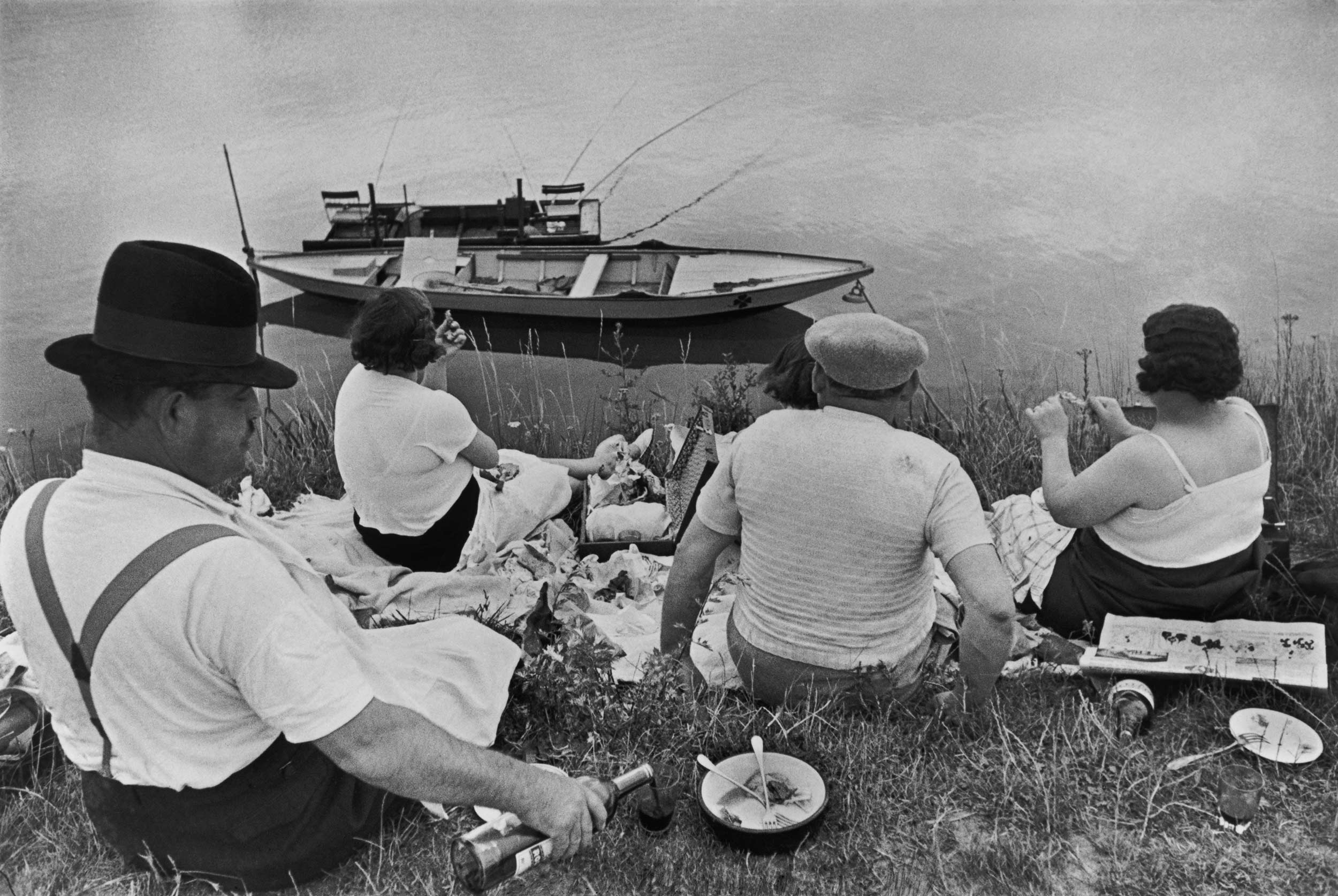On display this summer at the International Center of Photography is an exhibition that probes the tension between the archival and interpretive function of photography. Henri Cartier-Bresson: The Decisive Moment assembles the canonical photographer’s silver gelatin prints, letters, and periodicals to expose how decisions made by collaborators on the photographers iconic 1952 photo book The Decisive Moment have informed our understanding of his legacy and left it vulnerable to misinterpretation.
The museum marked the opening, this past Wednesday, with a lecture by Agnes Sire, the artistic director of Fondation Henri Cartier-Bresson in Paris. Sire traced the origins of the phrase “the decisive moment” back to the search for an English title for the volume. Fearing that Images a la Sauvette (or, “Images on the Run”) would not translate well to English, the publisher suggested an alternate title. The motto that would trail Cartier-Bresson’s photography across the globe, henceforth, was pulled from the preface of the book. “There is nothing in this world,” wrote Cartier-Bresson, “that does not have a decisive moment.” The photographer did not refer to the phrase again in the original French text and only once in the English translation.
In her talk at ICP, Sire explored the implicit contradictions between the titles: the finality and exactitude of “the decisive moment” and the impulsive desperation of Cartier-Bresson’s “images on the run.” We should, she suggested, dispel the weight of these titles to allow for productive consideration of the complications and nuances of Cartier-Bresson’s catalogue, which occurs, like most photography, on a spectrum of decisive moments and images taken on the run. Investigating photography’s paradoxical capacity to preserve and disturb, to essentialize and fragment, is the responsibility of any viewer or critic, especially when an given artistic axiom is too good to be true. If one doesn’t look more closely at the mythology, one just might spend a life looking for a moment that never existed.













